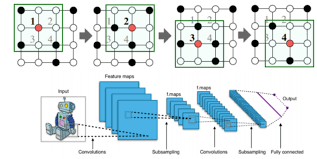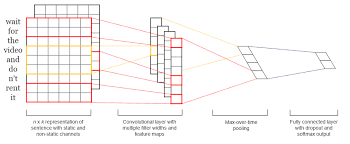Understanding Graph Neural Networks in Deep Learning
Introduction to Graph Neural Networks (GNNs)
In recent years, deep learning has revolutionized various fields such as computer vision and natural language processing. However, many real-world data structures are inherently graph-based, such as social networks, molecular structures, and transportation systems. This is where Graph Neural Networks (GNNs) come into play.
Graph Neural Networks are a type of deep learning model specifically designed to handle graph-structured data. They have gained significant attention due to their ability to model complex relationships and interactions between entities.
How GNNs Work
GNNs operate on graphs, which are composed of nodes (vertices) and edges. Each node can represent an entity, while edges represent the relationships or interactions between these entities.
The core idea behind GNNs is to iteratively update the representation of each node by aggregating information from its neighbors. This process allows the network to capture both local and global graph structures.
- Node Embeddings: Each node starts with an initial feature vector or embedding that represents its attributes.
- Message Passing: Nodes exchange information with their neighbors through a series of message-passing steps.
- Aggregation: Information from neighboring nodes is aggregated using functions like mean or sum to update the node’s representation.
- Readout: The final node embeddings can be used for various tasks such as node classification, link prediction, or graph classification.
Applications of GNNs
The versatility of GNNs makes them suitable for a wide range of applications across different domains:
Chemistry and Biology
In drug discovery and molecular biology, GNNs are used to predict molecular properties by modeling molecules as graphs where atoms are nodes and bonds are edges.
Social Network Analysis
GNNs help analyze social networks by predicting user behavior, detecting communities, and identifying influential users within the network structure.
Recommendation Systems
The ability of GNNs to capture complex user-item interactions makes them ideal for building more accurate recommendation systems based on user preferences and item similarities.
Understanding Graph Neural Networks: Key Concepts, Applications, and Challenges
- What is a Graph Neural Network (GNN)?
- How do Graph Neural Networks differ from traditional neural networks?
- What are the key components of a Graph Neural Network?
- How are nodes and edges represented in a GNN?
- What types of problems can Graph Neural Networks solve effectively?
- What are some popular applications of GNNs in real-world scenarios?
- How does message passing work in Graph Neural Networks?
- What are the challenges associated with training GNNs on large-scale graphs?
- Are there any limitations or drawbacks to using Graph Neural Networks?
What is a Graph Neural Network (GNN)?
A Graph Neural Network (GNN) is a specialized type of deep learning model designed to process and analyze graph-structured data. In essence, a GNN operates on graphs composed of nodes (representing entities) and edges (representing relationships between entities). The key characteristic of GNNs is their ability to capture complex relationships and interactions within graph data by iteratively updating the node representations based on information exchanged with neighboring nodes. This unique approach allows GNNs to effectively model both local and global structures within graphs, making them particularly well-suited for tasks involving relational data such as social network analysis, recommendation systems, and molecular biology research.
How do Graph Neural Networks differ from traditional neural networks?
Graph Neural Networks (GNNs) differ from traditional neural networks in their ability to operate on graph-structured data. While traditional neural networks are designed for tabular or sequential data, GNNs are specifically tailored to handle the complex relationships and interactions present in graph data. GNNs leverage the graph structure by incorporating information from neighboring nodes during the learning process, allowing them to capture both local and global dependencies within the graph. This unique architecture enables GNNs to model intricate patterns and dynamics that traditional neural networks may struggle to capture, making them well-suited for tasks involving relational data such as social networks, recommendation systems, and molecular structures.
What are the key components of a Graph Neural Network?
When exploring the concept of Graph Neural Networks (GNNs), it is essential to understand the key components that define their functionality. The primary elements of a GNN include node embeddings, message passing, aggregation, and readout. Node embeddings represent the initial feature vectors of each node in the graph, capturing its attributes. Message passing enables nodes to exchange information with their neighbors iteratively, allowing for the propagation of data throughout the network. Aggregation mechanisms combine information from neighboring nodes to update a node’s representation effectively. Finally, the readout phase uses the final node embeddings for various tasks such as node classification, link prediction, or graph classification. These components work together seamlessly to empower GNNs in modeling complex relationships within graph-structured data.
How are nodes and edges represented in a GNN?
In Graph Neural Networks (GNNs), nodes and edges are represented in a structured manner to capture the relationships and interactions within a graph. Each node is typically associated with an initial feature vector that encodes its attributes or properties. These feature vectors serve as the starting point for information propagation and aggregation throughout the network. Edges, on the other hand, can also carry information in the form of edge features that describe the relationship between connected nodes. By updating and aggregating information from neighboring nodes through message passing mechanisms, GNNs can effectively learn and model complex graph structures while considering both local node attributes and global connectivity patterns.
What types of problems can Graph Neural Networks solve effectively?
Graph Neural Networks (GNNs) are adept at solving a wide range of problems that involve graph-structured data. These networks excel in tasks where the relationships and interactions between entities play a crucial role in the analysis or prediction process. GNNs can effectively tackle problems such as node classification, link prediction, graph classification, recommendation systems, social network analysis, and molecular property prediction. Their ability to capture both local and global graph structures enables them to model complex relationships and extract meaningful insights from interconnected data. Overall, Graph Neural Networks are particularly well-suited for tasks that require understanding and leveraging the inherent structure of graph data for accurate and efficient predictions.
What are some popular applications of GNNs in real-world scenarios?
Graph Neural Networks (GNNs) have gained popularity in various real-world scenarios due to their ability to effectively model complex relationships in graph-structured data. Some popular applications of GNNs include drug discovery in chemistry and biology, social network analysis for predicting user behavior and community detection, and recommendation systems for personalized item suggestions based on user preferences and similarities. Additionally, GNNs have been utilized in areas such as fraud detection, traffic forecasting, knowledge graph reasoning, and more, showcasing their versatility and effectiveness in solving a wide range of real-world problems.
How does message passing work in Graph Neural Networks?
In Graph Neural Networks (GNNs), message passing is a fundamental mechanism that enables nodes in a graph to exchange information with their neighbors. This process involves iteratively updating the representation of each node by aggregating information from its neighboring nodes. Initially, each node is assigned an embedding that captures its attributes. During message passing, nodes send and receive messages containing information about their features and relationships. These messages are then aggregated using predefined functions, such as summation or averaging, to update the node’s representation. By repeating this process over multiple iterations, GNNs can capture both local and global graph structures, allowing them to effectively model complex relationships and interactions within the graph data.
What are the challenges associated with training GNNs on large-scale graphs?
Training Graph Neural Networks (GNNs) on large-scale graphs presents several challenges due to the complexity and size of the data. One major challenge is scalability, as the number of nodes and edges in a large graph can lead to increased computational requirements and memory usage. Another issue is over-smoothing, where information propagation over multiple layers can cause nodes to lose their unique characteristics and result in reduced model performance. Additionally, handling heterogeneous or dynamic graphs adds further complexity, requiring specialized techniques to adapt GNNs effectively. Balancing model expressiveness with computational efficiency is crucial when training GNNs on large-scale graphs to ensure accurate and scalable learning outcomes.
Are there any limitations or drawbacks to using Graph Neural Networks?
When considering the application of Graph Neural Networks (GNNs), it is important to acknowledge that, like any other technology, they come with certain limitations and drawbacks. One common challenge with GNNs is their scalability when dealing with large-scale graphs. As the size of the graph increases, the computational complexity and memory requirements also grow significantly, potentially leading to performance issues. Additionally, GNNs may struggle to effectively capture long-range dependencies or global structures in certain types of graphs. Moreover, interpreting and explaining the decisions made by GNN models can be complex due to their inherent black-box nature. Despite these limitations, ongoing research and advancements in GNN architectures aim to address these challenges and enhance the capabilities of Graph Neural Networks for a wider range of applications.




